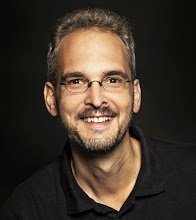Projects to digitize processes take longer than those involved in the project would like. In dialog with AI text generators, it has become clear to me why this is the case. Perhaps the analogy in this article will help us to design projects differently.
What does finished digitalization look like?
I'll start by describing a digital workplace so that we can develop a common idea. Characteristics are:
- Empty mailboxes
- One common filing system, separated into ongoing and completed cases
- One common filing system, organized by processes
- A system in which all cases can be found
- Secure access to the processes at any time, from anywhere
- Processes can be triggered securely from the outside; overarching, secure collaboration
- Service providers (incl. AI) take over parts of the work (incl. data protection-compliant data processing).
All participants have agreed on common systems and use them consistently and consistently.
Digitalization is different
There were also major changes in the world of work in the past, e.g. the industrial revolution, the introduction of electric power or the introduction of the Internet. But this is where digitalization differs: in the aforementioned changes, the producers were different people than the consumers, i.e., you could buy electricity or access to the Internet.
With digitalization, the users are also the producers of the change. So you can't buy digitalization, you have to do it yourself. In other projects, we unconsciously have the image of a craftsperson in our minds. We go to this person and ask them to make us a piece of furniture. We talk about the wishes, the measurements, money and deadlines.
With digitalization, we are the craftsmen ourselves. What analogy can we think of for projects in which we ourselves are users and craftsmen?
Digital transformation projects are like cleaning up the apartment
We can take many examples from personal life: Exercising and losing weight, getting healthy after an illness, taking a vacation. These are all examples where we ourselves are the beneficiaries but also the ones doing the work. No doctor can get well vicariously through the patient. Nor can we send another person on vacation for us and then come back refreshed.
 |
| Digital transformation projects are like cleaning up the apartment (Source: unsplash.com) |
As a comparison for digitalization, I like the analogy of cleaning up our own apartment:
- We know our own home best.
- We have created the clutter ourselves in the past.
- We know best about the objects in the apartment.
- We benefit ourselves when the apartment is tidy.
- We can get ideas from elsewhere, but we have to clean up ourselves.
Of course, if the mess gets on top of you, you could move to a new furnished apartment. Most people will rather use opportunities and routines to keep or bring the apartment in a nice condition.
What routines have we developed over time to keep things tidy? Here are a few examples:
- Doing the dishes after cooking.
- Making the beds before leaving the house.
- Cleaning sanitary areas regularly.
- Emptying the desk before leaving the office.
- Disposing of old items for new ones.
We could apply these routines to digitalization as well, for example:
- Regularly clean up the desktop, downloads folder, and mailboxes.
- Save documents already created as templates for a process.
- Archive completed processes.
Some people also use certain occasions to declutter, for example:
- A garden party is the occasion to tidy up the garden.
- A new kitchen or a new sofa is the occasion to tidy up the kitchen or the living room.
- An announced visit is the occasion for the preparation of the guest room.
The hiring of a new employee, new software, new legal requirements, etc. could be occasions to digitize processes.
Where do we start tidying up? Usually in the places where we spend a lot of time or where we receive guests. The digital counterpart is our core processes.
How do we tidy up? We could take a cue from Marie Kondo or from 5S. In the KonMari method, you tackle groups of items. You start with those that can be retrieved quickly when in doubt (e.g., books or clothing). The most difficult items to recover are very personal items or written documents. In the process world, groups can also be formed with which one can start quickly.
Summary
Let's say goodbye to the image of a digitalization project. Digital transformation projects are like cleaning up one's own apartment or - even more unpleasantly - like cleaning up one's shared apartment. Like rooms and objects, there are processes and documents or information in the digitized world. Instead of planning a project, it is easier to agree as a team on routines and occasions when we tidy up. In this new analogy, digitization becomes an ongoing process. But we can deal with it.
This text is the English translation of the post Warum sind Digitalisierungsprojekte so zäh? Eine Analogie here in the Teamworkblog from July, 31st, 2023.

Kommentare
Kommentar veröffentlichen